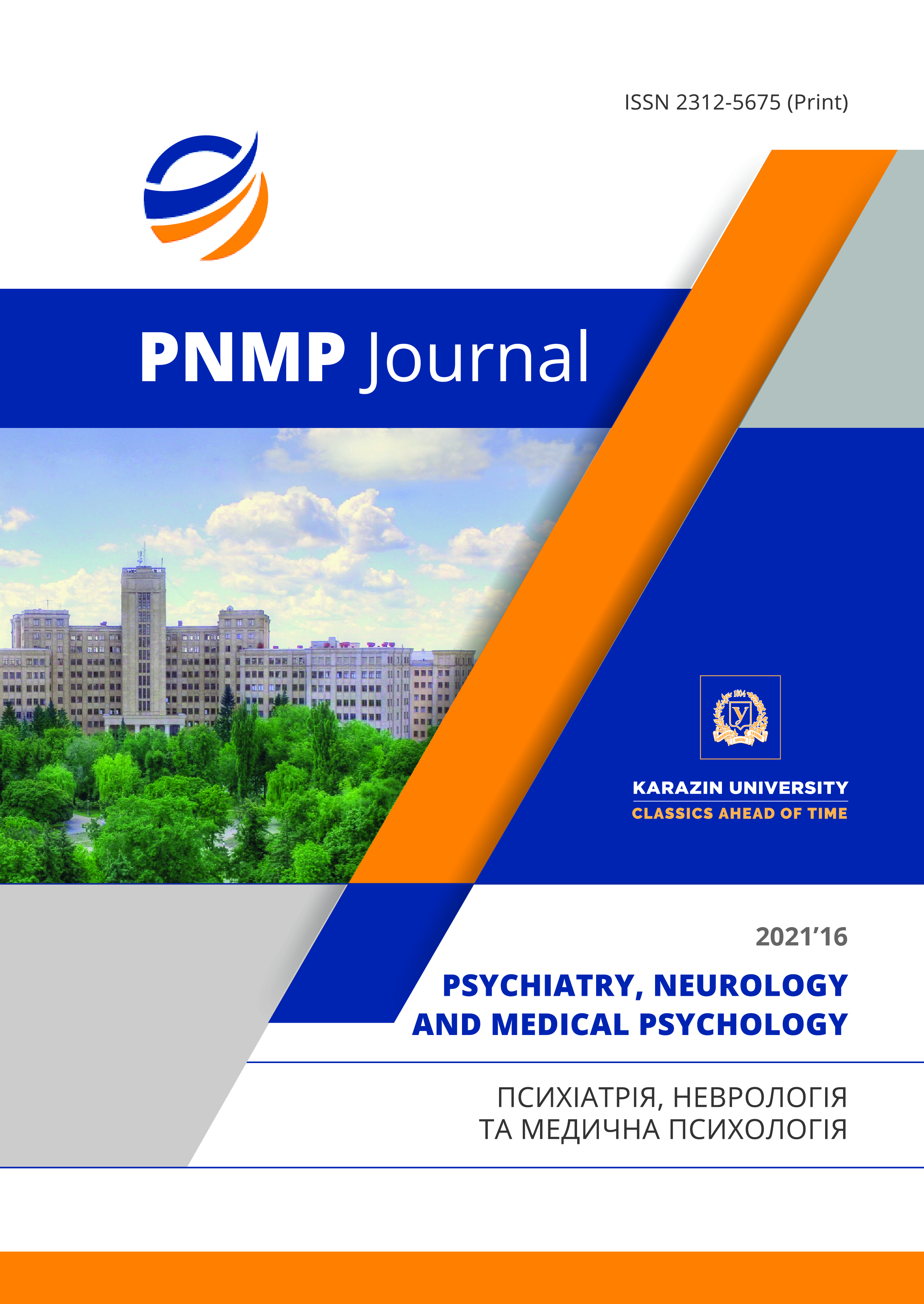Structural and functional changes of abdominal organs in patients with hepatocerebral degeneration
Abstract
The paper presents the results of ultrasound diagnostic of 76 patients with neurological forms of hepatocerebral degeneration (HCD) or Wilson’s disease (WD), who were examined and treated at the clinic of the Institute of Neurology, Psychiatry and Narcology of the National Academy of Medical Sciences of Ukraine. According to ultrasound diagnostic, all patients had pathological changes in the liver. In 58% of patients these changes corresponded to chronic hepatitis, in 42% - liver cirrhosis, and in 32% of patients were reported for portal hypertension. Background hepatic hemodynamics of patients was within normal limits, but in 82% of them the reaction to food load was negative. Doppler study showed that background hepatic hemodynamics in patients with neurological forms of hepatocerebral degeneration (GCD) was within normal limits. However, the food load showed that 82% of patients had impaired reciprocal autoregulation of liver microcirculation. This indicates a decrease in their compensatory-adaptive capacity of the liver. This position is confirmed by the fact that 70% of these patients have a decrease in vasoactive endothelial function. Our study of the functional state of the vascular endothelium showed that patients with GCD have a significant decrease in vasoactive endothelial function. In general, the group was only 8.12% at a rate of 10% or more. Despite the young average age of our patients (29.7 years), only 30% of patients had a normal vasoactive reaction. These were patients under the age of 25 from the group of chronic hepatitis. The degree of endothelial dysfunction was significantly higher in patients with liver cirrhosis compared with chronic hepatitis. According to ultrasound elastography, in the vast majority of examined patients with GCD (88%) there was increased stiffness of the liver parenchyma. On the average on group of patients it made 10,62 KPA with a range from 4,74 to 20,69 KPA (norm 0,4-6,0 KPA). Thus, patients with neurological forms of GCD, which are observed by a neurologist, it is necessary before each course of treatment, but at least 1-2 times a year, to conduct ultrasound of the abdominal cavity.
Downloads
References
M. E. Bagaeva, B. S. Kaganov, C. B. Gauthier et al. The clinical picture and course of Wilson's disease in children. Questions of modern pediatrics. 2004, no. 5, pp.13-18. [in Russ.]
N.P. Voloshyna, I.K Voloshyn-Gaponov, E.A. Vazhova. Algorithms for diagnostics and treatment of patients with ailments Wilson-Konovalov. Ukrainian Bulletin of Psychoneurology. 2015, pp. 23-28. [in Russ.]
T.S. Mischenko, A.V. Linska, I.K. Gaponov. Stan of cerebral hemodynamics in ailments on the development of sclerosis. International neurological journal. 2010, pp. 24-29. [in Russ.]
Linskaya, A. V. Doppler study of hepatic hemodynamics and stiffness of the liver parenchyma in the mode of shear elastography with Wilson’s disease. Abstracts of the IV Congress of the Ukrainian Association of specialists of Ultrasonic Diagnostics. 2012, pp. 177-178. [in Russ.]
Rosina T.P. Clinical characteristics, course and prognosis of the abdominal form of Wilson's disease: dissertation for the degree of Cand. medical sciences. 2005. [in Russ.]
Sukhareva G.V. Hepatolenticular degeneration. Book. Selected Chapters of Clinical Gastroenterology. M. 2005, pp. 199-209. [in Russ.]
AP Schekotova, A. V. Tuyev, V. V. Schekotov, I.А. Bulatov. The relationship of endothelial dysfunction indicators and syndromes arising in chronic diffuse liver diseases. Kazan Medical Journal. 2010, vol. 91, no2, pp. 143-148. [in Russ.]
Sternlieb I. Perspectives on Wilson's disease. Hepatology. 1990, vol.12, pp. 1234-9. DOI: https://www.doi.org/10.1002/hep.1840120526 [in Eng].
Tsivkovskii R. et al. Functional properties of the copper-transporting ATPase ATP7B (the Wilson's disease protein) expressed in insect cells. J. of Biol. Chem. 2002, vol. 277, no. 2, pp. 976-983. DOI: https://www.doi.org/10.1074/jbc.M109368200 [in Eng].

